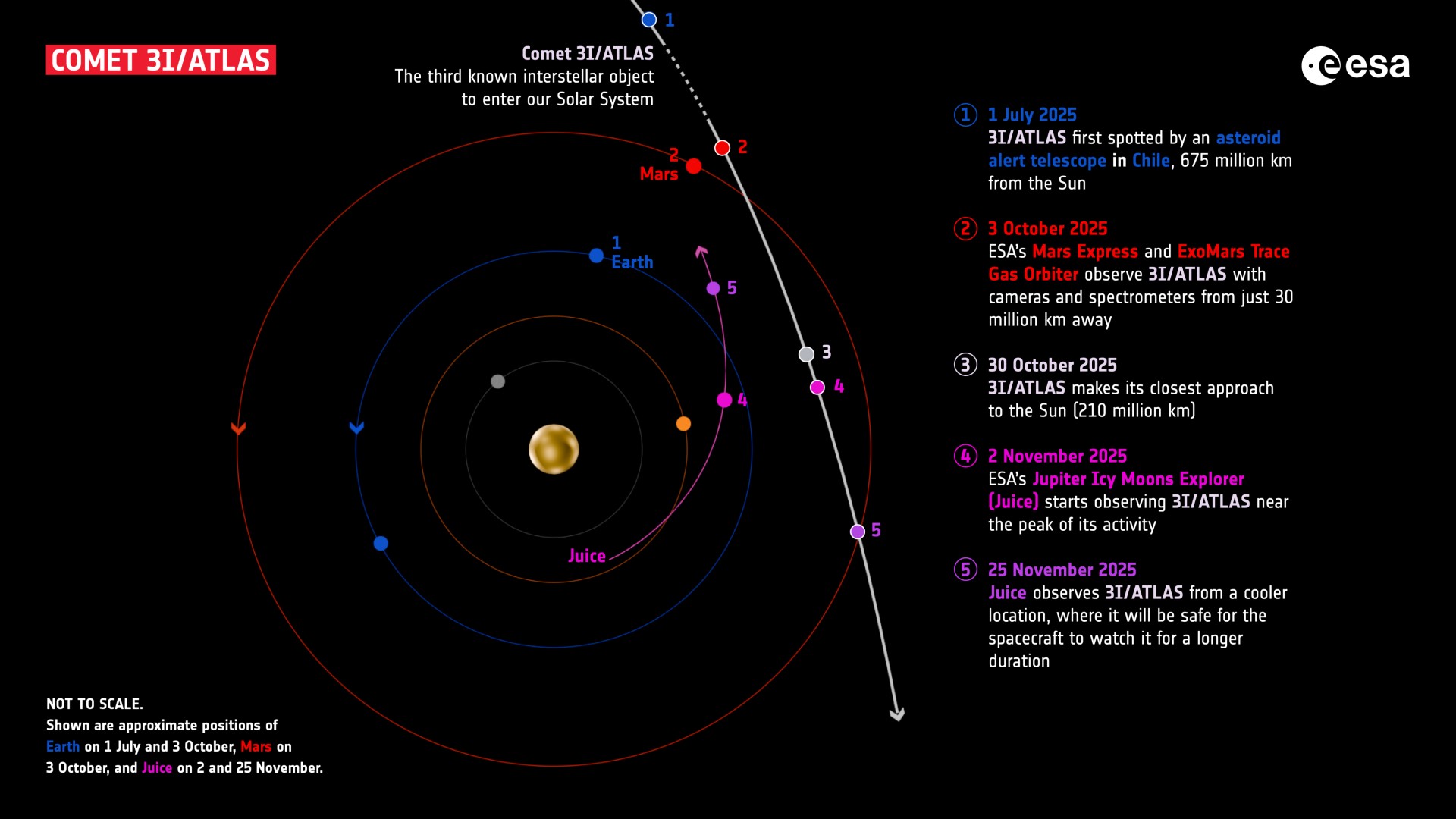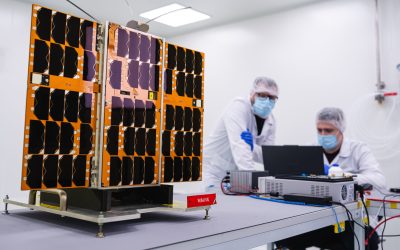On Mars, NASA’s Perseverance rover captured a curious anomaly: an object streaking across the Red Planet’s sky.
On October 4, NASA’s Perseverance rover captured an image with its Right Navigation Camera (Navcam) depicting a distinct streak of light in the Martian sky. This observation is particularly noteworthy as it coincides with the projected closest approach of interstellar comet 3I/ATLAS to the Red Planet, a timeline confirmed by the European Space Agency (ESA).
Neither NASA nor the Jet Propulsion Laboratory, which developed and operates the Perseverance rover, has confirmed whether the image depicts comet 3I/ATLAS. The ongoing U.S. government shutdown makes it uncertain if the agency currently possesses the necessary staffing to release an official statement.

In an earlier declaration, NASA had specified that its Perseverance rover was among the agency’s resources designated to monitor the third-known interstellar comet as it passed through our solar system.
Despite unverified claims circulating online, fueled by a comet’s distinctly cylindrical appearance in an image captured by NASA’s Perseverance rover, scientists have swiftly dismissed theories suggesting it is an alien spacecraft.
Astrophysicist Avi Loeb, associated with the Center for Astrophysics | Harvard & Smithsonian, clarified on his blog that the distinctive cylindrical, stripe-like appearance of an object within a composite Navcam image was an artifact. He explained that this visual characteristic stemmed from the prolonged integration time used to capture the image, during which the object, identified as 3I/ATLAS, traversed the Martian sky.

The prominent stripe captured in the Navcam image is attributed to the aggregation of hundreds of individual Navcam exposures, collected over an approximate ten-minute period, according to Loeb. He further clarified that object 3I/ATLAS would have presented as a simple circular point in any single snapshot, given the Navcam’s maximum exposure duration of 3.28 seconds.
The interstellar comet 3I/ATLAS has just concluded its closest pass by Mars, approaching within 18.6 million miles (30 million kilometers) of the Red Planet on October 3. As the comet progresses beyond Mars, the European Space Agency (ESA) is actively using its Mars Express and ExoMars Trace Gas Orbiter (TGO) spacecraft to conduct detailed observations of the unique celestial visitor.
Leveraging the advanced capabilities of both the Hubble and James Webb Space Telescopes, NASA has successfully documented striking imagery of the comet. These powerful observatories have also been instrumental in analyzing its composition during its passage through our solar system.

The agency also intended to mobilize a broad spectrum of its existing spacecraft for comprehensive comet research. This extensive observational network would include instruments like the TESS exoplanet hunter, the Swift gamma-ray observatory, the SPHEREx infrared telescope, the Mars Reconnaissance Orbiter, the Curiosity rover, and the Jupiter-bound Europa Clipper probe, among others.
The full ramifications of the ongoing U.S. government shutdown on NASA’s strategic plans are currently undeterminable, as the space agency’s communications offices remain closed. This operational pause has led to the furlough of 15,000 NASA personnel, exceeding 80% of its total workforce. The situation persists amidst protracted negotiations among lawmakers in Washington D.C. over the next federal funding bill.







